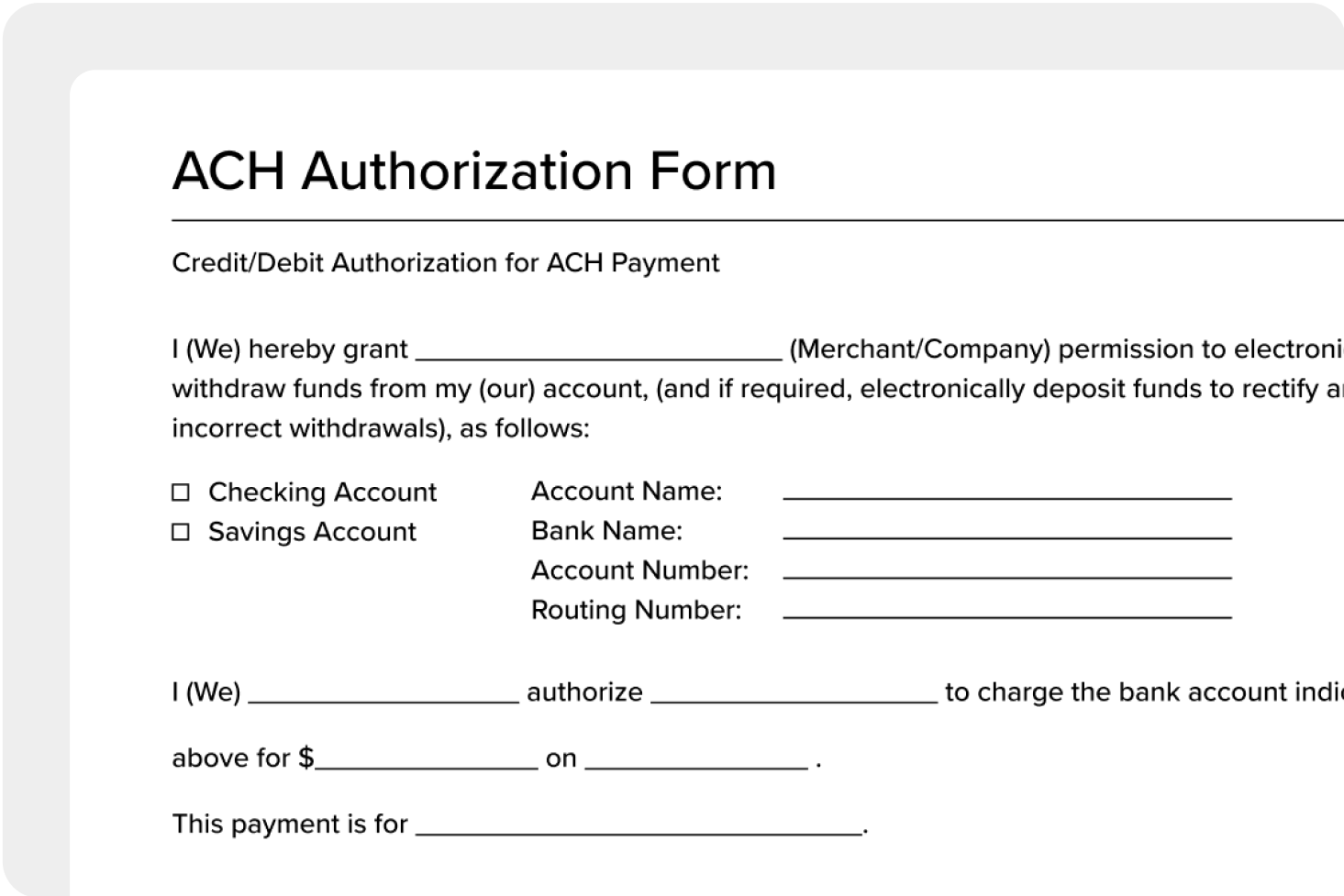What are ACH payments?
ACH payments are electronic transactions that transfer funds between bank accounts using the ACH network.
The ACH network is a digital payment system used mainly in the U.S. that facilitates secure, efficient, and cost-effective bank-to-bank transactions. International ACH transfers are possible but vary based on bank policies and destination country restrictions.
The ACH network is run by the National Automated Clearing House Association (NACHA), which was established in 1974 to enforce rules governing electronic transactions.
When making an ACH payment, a crucial distinction lies in comparing credit vs. debit transactions. Since ACH payments are categorized into ACH debits and ACH credits, it’s essential to know what each entails.
What are ACH debits?
ACH debits give the recipient the power to take out funds, making it handy for managing payments. This is especially useful for places like tax departments handling monthly transactions, where controlling when and how funds are withdrawn is crucial.
ACH debit transactions are also known as pull transactions since they involve the payee pulling funds from the originator’s account with their permission. For ACH debits, the payee (the person or organization receiving the payment) initiates the funds transfer from the originator’s bank account.
ACH debits also save a lot of money by cutting back on traditional methods like checks or wire transfers, which means fewer fees and less paperwork. The risk of insufficient funds or unauthorized transactions is lower because the recipient starts the process, making financial transactions more secure.
ACH credits, on the other hand, move funds in a different direction compared to ACH debits.
What are ACH credits?
ACH credits speed up transfers because the sender takes the lead, which is especially advantageous for tax departments managing monthly transactions.
ACH credits, or push transactions, are electronic payments initiated by the originator where funds are pushed from the originator’s bank account to the receiver’s bank account.
ACH credits are common for payroll direct deposits and governmental benefit deposits, such as social security or welfare payments, where funds are deposited directly into recipients’ bank accounts.
ACH credits provide an efficient and secure way to move money from one bank account to another since these transactions can be scheduled and usually processed within one business day.
Like ACH debits, ACH credits are cost-effective and accrue lower processing costs.
The difference between debit and credit transactions lies in the distinct roles of senders and recipients in ACH transfers.
ACH credit vs. debit
While ACH transactions offer convenient and efficient financial transactions, the difference between ACH debit and ACH credit lies in the direction of fund movement.
With an ACH withdrawal or ACH debit, companies can efficiently pull the money they’re due directly from your bank account. This process is efficient because of regulations from NACHA, ensuring ACH debit transactions are processed within one business day.
In contrast, an ACH credit is initiated by the originator to push funds from their bank account to the receiver’s bank account. These credits are similar to a direct deposit but without the fees of the processing bank that come with other methods like wire transfers. ACH credit transactions are also typically processed in 1-2 days.
Whether you use a credit or a debit, individuals and businesses prefer ACH payments, thanks to their many advantages.
The benefits of using ACH payment methods
ACH transfers are a popular payment method because they streamline the payment process.
ACH simplifies payments and reduces fees, whether getting your salary directly deposited into your bank account, paying bills online, or transferring money between your accounts. Plus, you can set up automatic payments for regular bills, making ACH a reliable choice for managing your finances.
More articles you might like:
CONTENTS
From direct deposit to bill payments, the ACH network shapes the landscape of electronic fund transfers. ACH extends its influence across various areas to move funds between businesses, individuals, and financial institutions.
- 1
- 2
- 3
- 4
- 5
- 6
- 7
- 8
- 9
- 10
- 11
- 12
- 13
- 14
- 15
- 16
- 17
- 18
- 19
